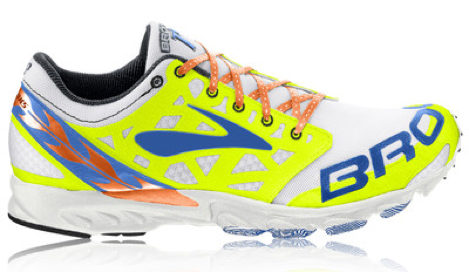How much cushioning do we need in our shoes?
- Simon Miles - Podiatrist
- Sep 14, 2017
- 3 min read
Running shoe trends are constantly changing and recently the trend is moving away from the barefoot / ultra-minimalist styles. This is possibly due to inappropriate shoes combined with poor technique and inadequate strength resulting in increased injury. This coincides with Vibram Five Finger barefoot shoes recently being found guilty in the United States of misleading marketing, allowing anyone who has brought the shoes to claim a refund!!
With the trend moving back to more traditional shoes the question becomes, how much cushioning should we be looking for?
This is a very difficult question to answer, let’s face it, people will have different needs and there is no one size fits all solution (excuse the shoe pun).
A recent paper by Tung et Al (2014) looked at the metabolic cost of cushioning which examined the effect on runner’s efficiency when changing surfaces that interact with foot or shoe. The theory here is that it takes muscular effort to absorb shock, which seems relatively straightforward and plausible. So, if we can absorb impact forces with our shoes this reduces the amount of effort required by our muscles (referring to shock absorbency) thus reducing the effort required with each step, making us more efficient. As ever it is not quite that easy and if this were the case, then everyone would be happily breaking records in the maximalist HOKA ONE ONE’s.

Ultra cushioned Hoka One One’s taking cushioning to the next level. 26mm under heel to
21 mm under the forefoot.
Let’s have a closer look at the study. This study only looked at 12 runners who had significant barefoot/ minimalist running experience and all favoured a midfoot strike pattern.
The study was conducted barefoot on a hard deck treadmill with 1cm and 2cm shoe foam attached to the belt of the treadmill and the same test on a treadmill without foam. The subjects were tested both barefoot and then wearing lightweight running shoes.
Despite the small sample size the results were very interesting:
Running on the 1cm foam was more efficient than running barefoot on a normal treadmill on average by 1.63%.
The barefoot test and 2cm foam treadmill test showed no significant difference in efficiency. As you can see this throws out the Hoka one’s idea that, more cushioning is more efficient.
The final comparison is between running barefoot on the normal treadmill and running with lightweight minimalist running shoes on the normal treadmill showed no significant difference in efficiency, but interestingly stride length increased by about 5cm when wearing shoes.
Increasing stride length is not desirable if the runners foot is striking out in front of the centre of mass, this seems to be encouraging an aspect of form, Over Striding that is a common problem when people try to run faster. Instead we try to encourage runners to increase their stride frequency (leg speed) when trying to run faster.

Light weight racing flat with approx. 1cm cushioning in the mid/ forefoot. 182 g
So why would running barefoot and with minimalist shoes seem to be equally efficient when running on 1cm foam is more efficient than running barefoot? Well, it was discussed by Fredrick et al (1983) that for every 100g increase in running shoe weight there was a metabolic cost of 1% on efficiency, if we take this into account the shoes weight offsets the positives of the shoe cushioning. So where does this leave us? Confused? Well this study is not conclusive, but for me has highlighted a number of things:
Cushioning to a point may be more efficient but it seems like there are limits to how much is beneficial especially with a heavier shoe.
There is definitely a need for shoe manufacturers to continue to innovate and experiment with different materials whilst making the shoes as light as humanly possible in search of that perfect cushioning to weight ratio.
When adding shoes, all runners increased their stride lengths.
But what I really like and have taken from the study, is that without thinking about it the subjects in the study increased their stride length when wearing shoes, this form change highlighted that even for experienced runners, analysis and technique coaching is still so important especially when changing footwear.
What would be great to see is if the runners were inexperienced. Would this increase in stride length be more extreme than an experienced runners with good form? Definitely food for thought! Hopefully further studies comparing forefoot and rear foot runners and how amateur and experienced runners were effected will be available soon.
Thanks for reading, I hope this has sparked some debate and provided an insight into some of the latest research.
If you have any questions about footwear or running technique please contact us at Excellence Physio - info@excellencephysio.co.uk
Simon Miles
Podiatrist



Comments